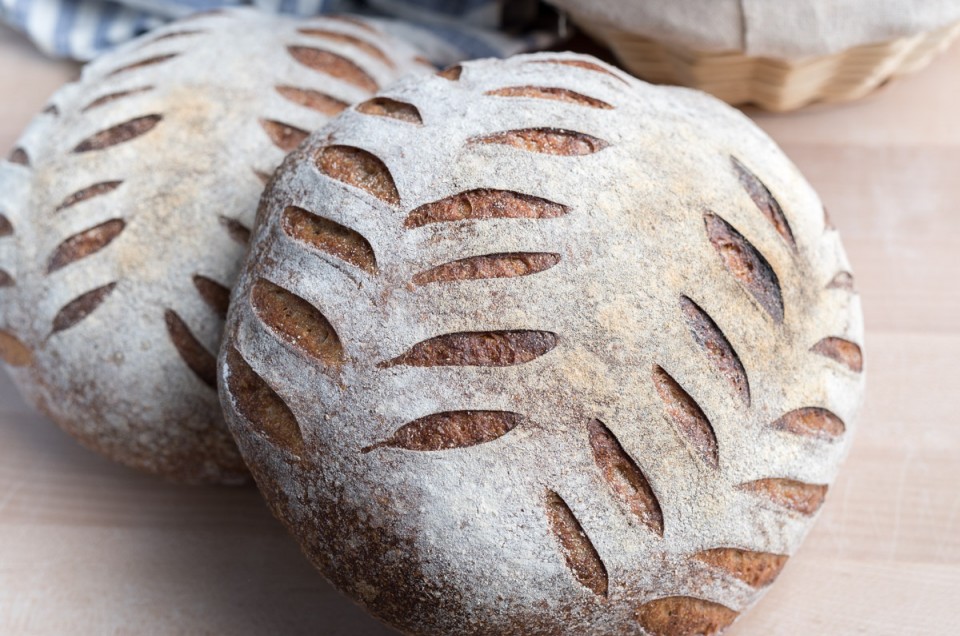


With a blade in hand and a shaped round of dough on the workbench, bakers have an unexpected blank canvas before them. First and foremost, scoring bread dough with decorative cuts serves an important purpose: it guides a loaf to rise in a consistent, controlled, and optimal manner. But from there, let your creativity run free. As the old saying goes: we eat first with our eyes.
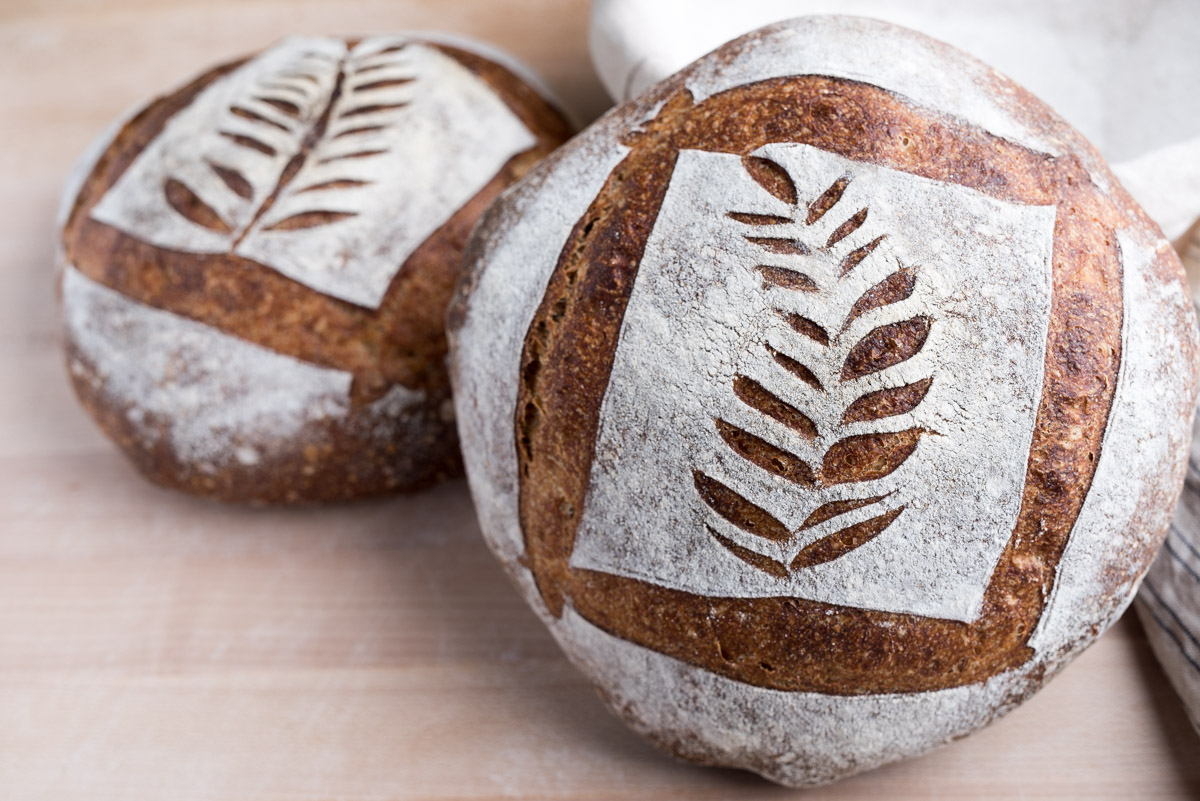
A single or double slash promotes a large opening but a series of small, delicate slashes creates a more intricate design. Stars, leaves, flowers, geometric shapes of all kinds — when utilizing the correct scoring implement (see my last post on scoring implements and general techniques), creativity has no bounds.
I recently attended a week-long baking workshop and after spending the good part of two days hands-deep in dough — admittedly, my favorite part — everyone seemed most excited to score dough. As we lined up in front of our loaves-to-be the wide grins were hard to ignore. There’s satisfaction in cutting dough you’ve spent time coercing from nascency to maturity, like a painter’s first brushstrokes on an all-white canvas brimming with potential.
In this post, we’ll look at various scoring techniques using my Fresh-Milled Spelt Sourdough Bread recipe. Each technique listed below is merely a starting point, a springboard for you to invent your own personal mark. But first, let’s talk about how to set the stage and prepare the dough for scoring.
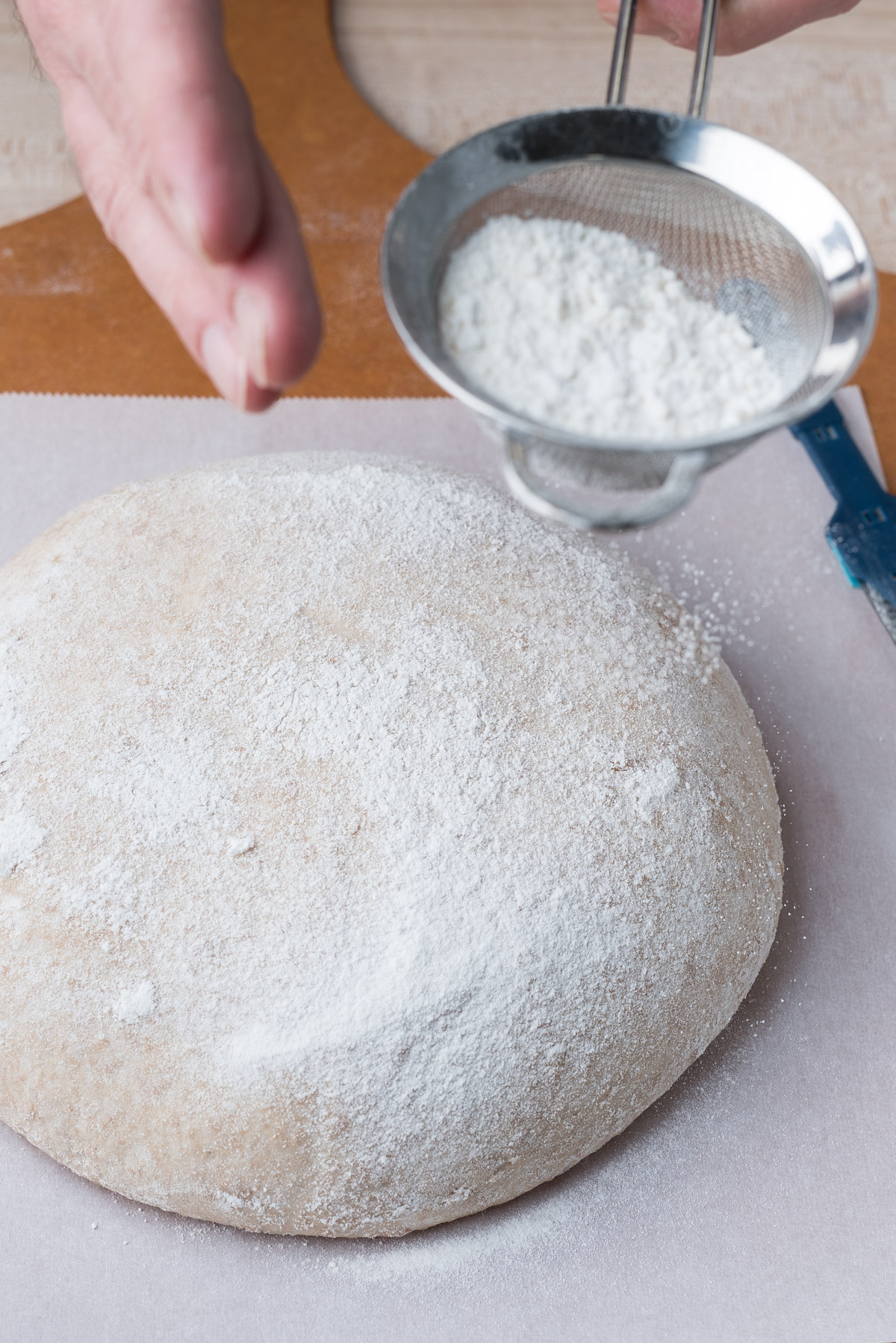
Dusting the top of your loaves with flour prior to scoring will ensure maximum contrast between white flour and dark, baked crust. I prefer to use a mixture of 50% white rice flour and 50% all-purpose flour. White rice flour has a higher scorch temperature that helps it retain a stark white color, even after prolonged time in the oven. I add 50% all-purpose flour because I do like scattered color, but if you prefer an all-white surface, go with 100% white rice flour.
First, turn your proofed dough from its proofing basket out onto a piece of parchment paper or (carefully) into a preheated baking vessel. The top of the dough might have flour from the basket; brush off the flour gently so only an even layer remains.
Using a fine-mesh sieve filled with the dusting flour, hold it above the dough and tap the side as you move around to evenly coat the surface. Be light with dusting as too much flour can quickly cake on the dough, transforming it from blank canvas to messy chalkboard.
At this point, the dough is ready for you to score and bake.
The key to success in each of the designs below is to score deep enough to cut through the skin of the dough formed during shaping, but not so deep that structural integrity is compromised. Note that a single and double slash do require a little more scoring depth, but the others should just break the surface so you see the interior of the dough, with the outside slowly splaying open.
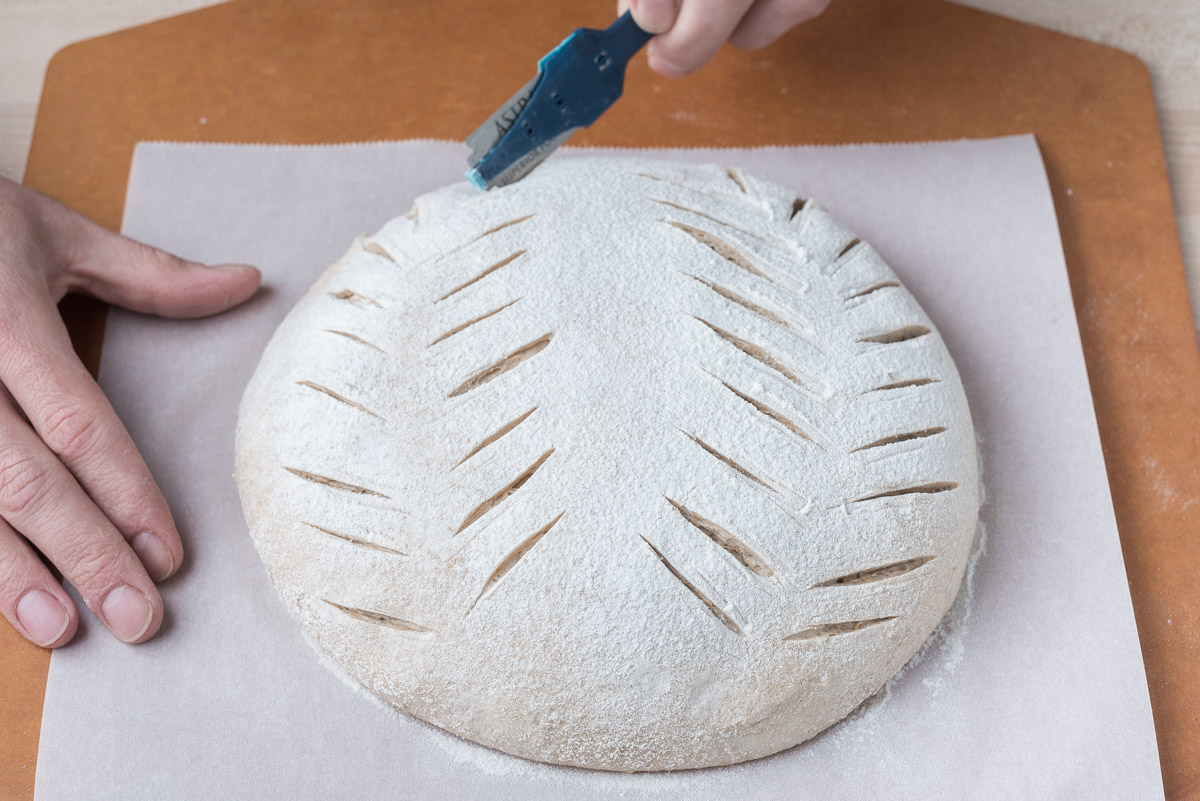
When finished, take a look at the design. Are there any spots that don’t look like they’re cut sufficiently deep? If so, lightly run the lame (blade) over the same cut line again to ensure spreading in the oven.
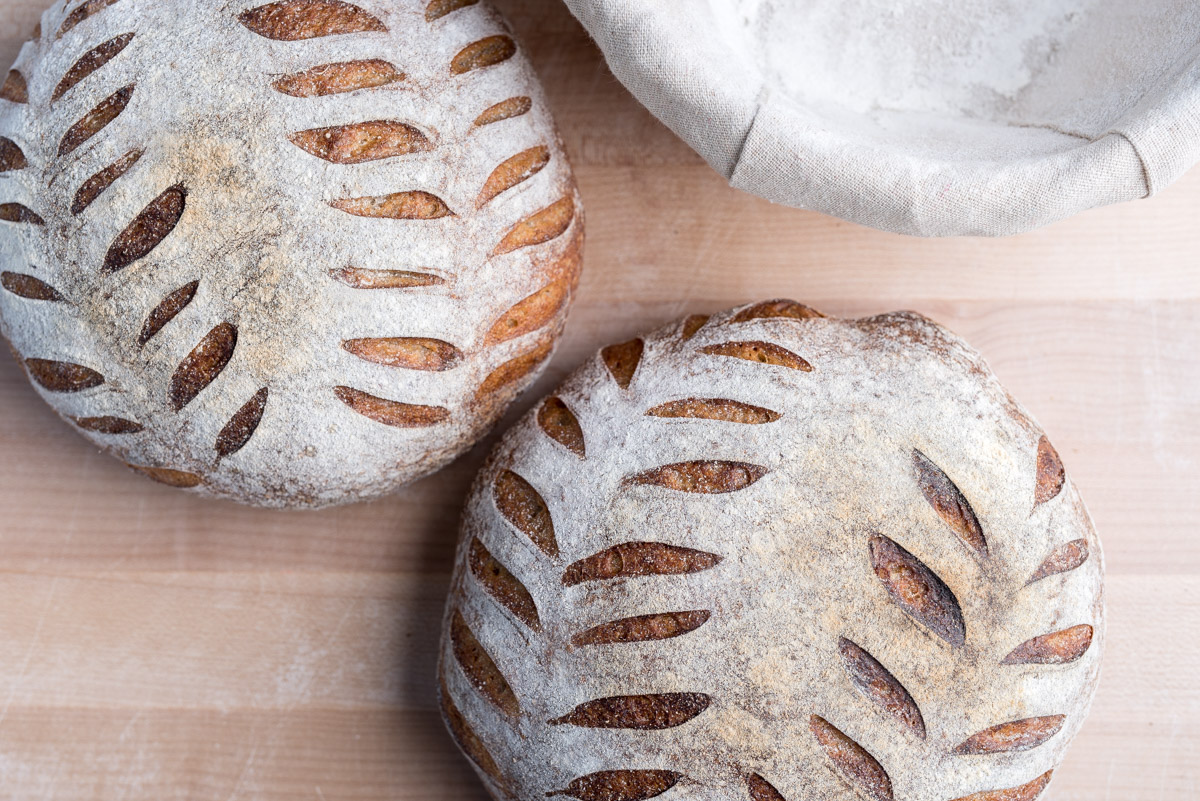
This design is one of my favorites for boules: a series of small cuts along the sides intended to emulate leaves or wheat stalks. The size and number are up to you, but I prefer larger cuts spaced regularly.
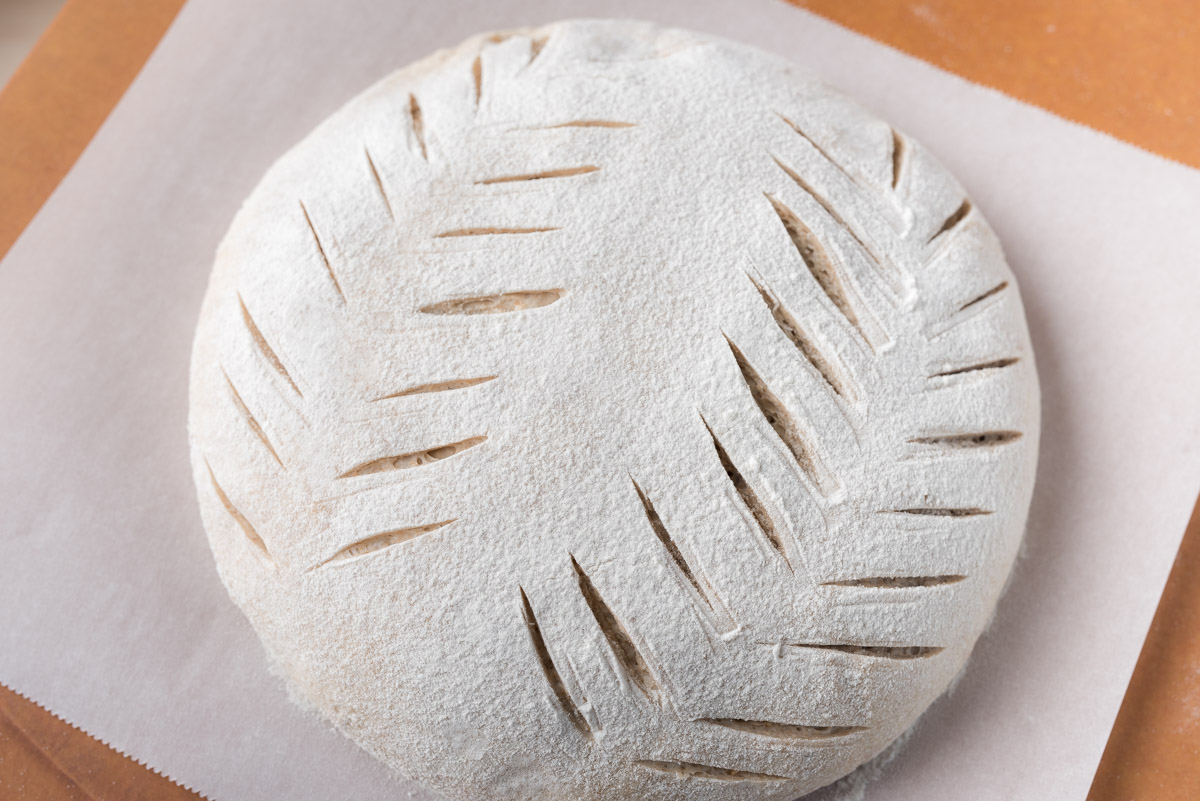
The preferred scoring implement for this design is a straight blade. A straight blade cuts straight into the dough at a 90° angle, perfect for the straight cut for each leaf.
Start at the top of the round (the side farthest from you) and begin making diagonal slashes in series from top to bottom. I like to add a gentle curve as the cuts progress from top to bottom; this curved set looks nice when the loaf expands up and outward in the oven. Then, repeat for the other side of the stalk where each cut matches its pair to the side.
In this design the center cross is cut slightly deeper than the other slashes, encouraging the center area to open more dramatically.
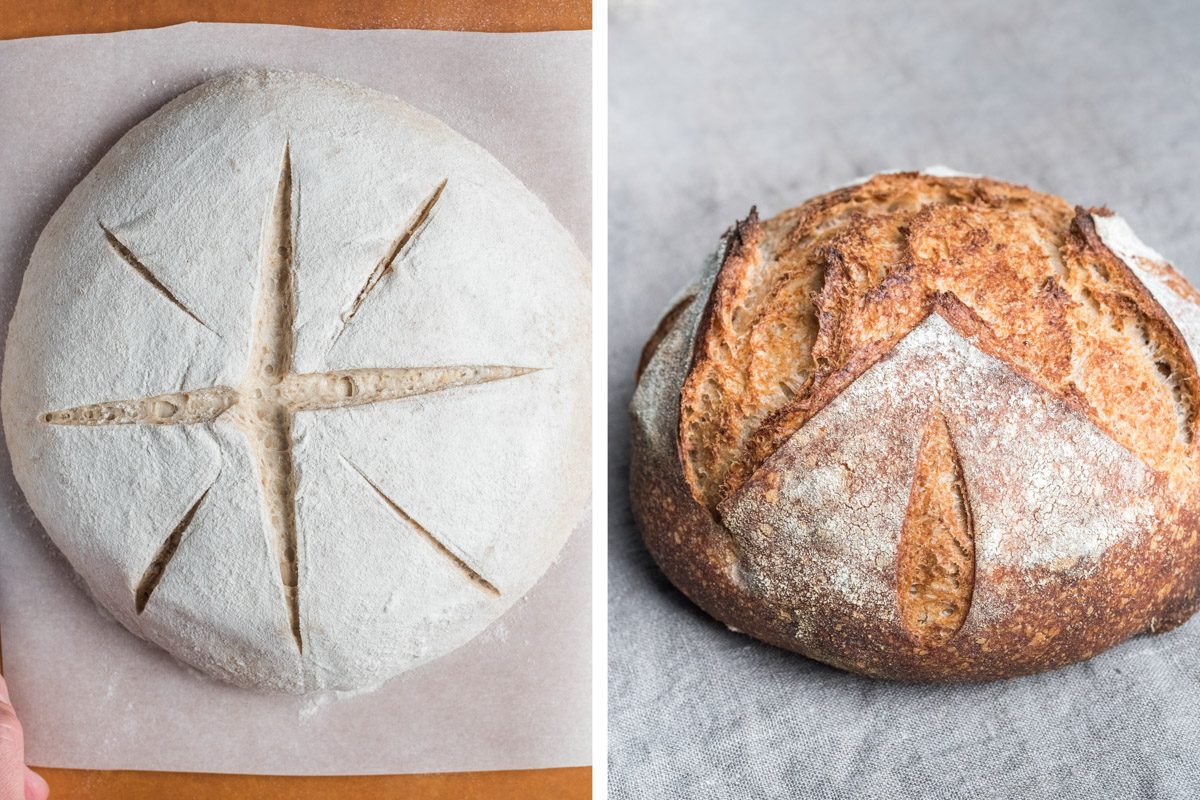
Similarly to the first design, the cross and side slashes are best done with a straight blade angled at 90° to the dough’s surface.
As seen above, start with the cross and cut in slightly deeper than for the secondary cuts to the side. If you want to take this even further, the cuts to the sides of the cross could be replaced with small wheat stalks as seen in the first design. This leads to an incredibly detailed score!
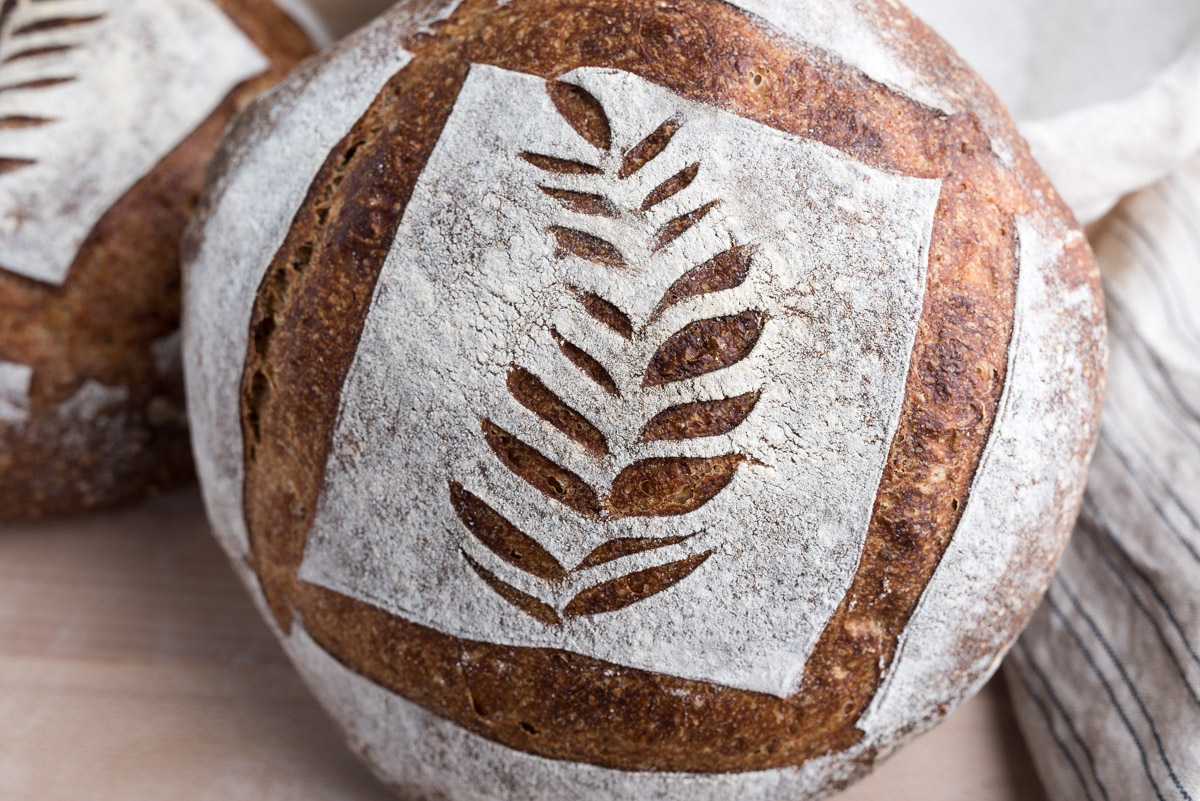
The preferred scoring implement for this design is again a straight blade. However, if you want the “box top” to lift up and off the rest of the dough, a curved blade could be used to create a small lip for each edge of the box.
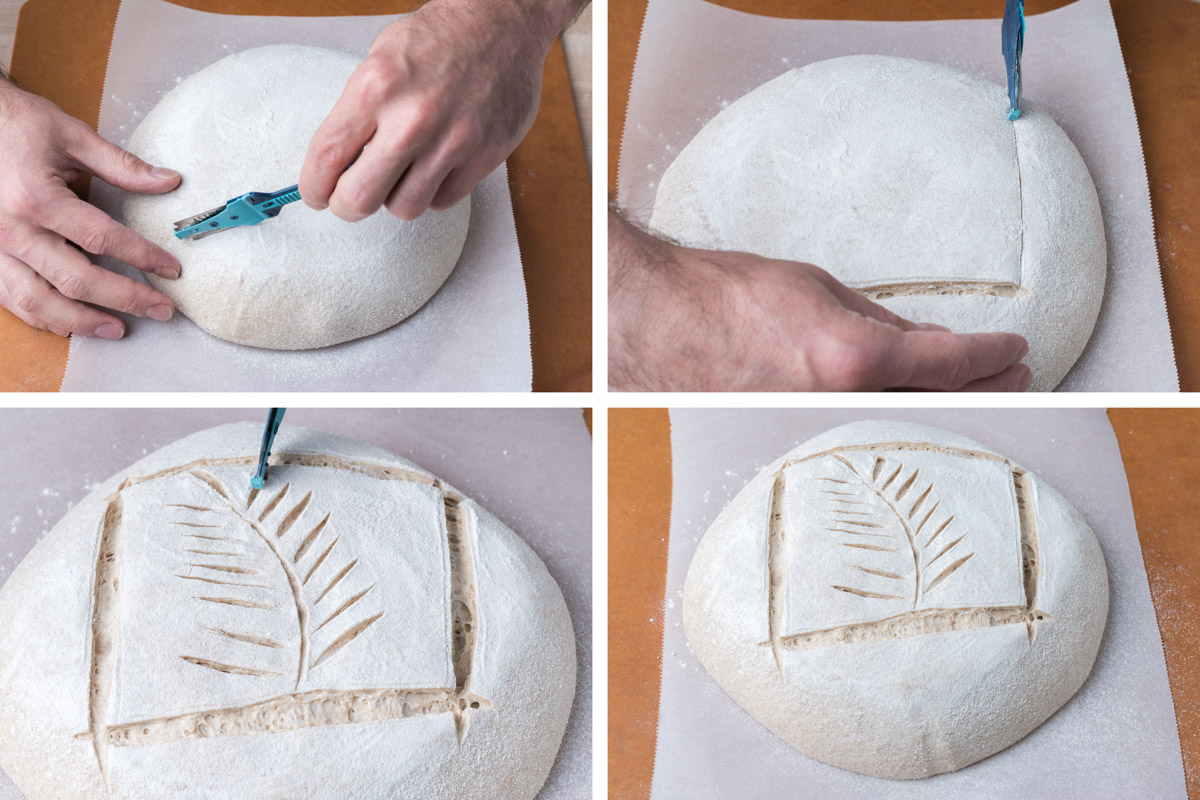
Start first with the perimeter box by making four straight-edge slashes. Because this area will remain mostly flat during baking, score any design you wish at the top. Feel free to be creative! I choose to score a wheat stalk in the box top with a curved line running down the middle.
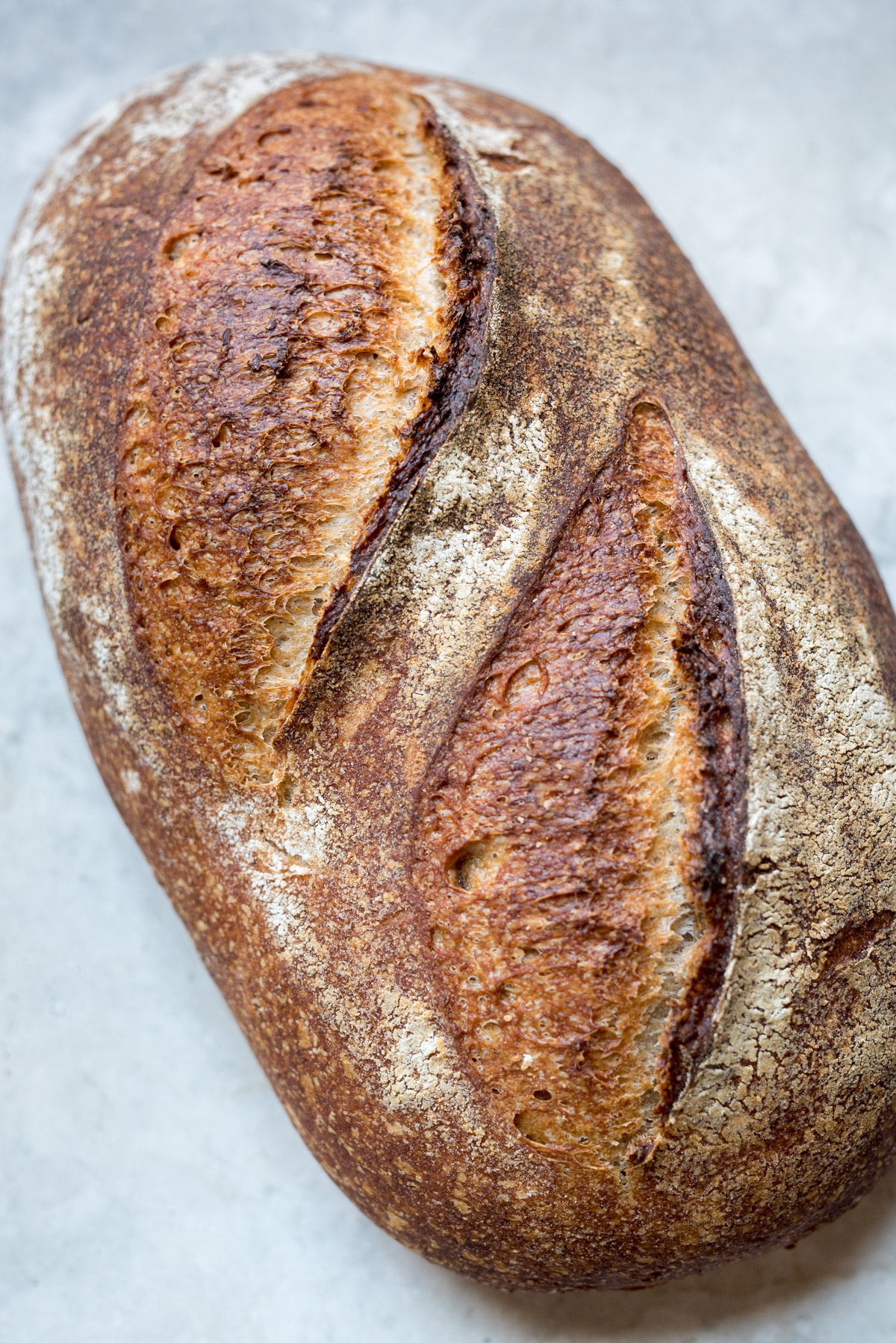
It’s no secret that my favorite shape for a loaf of bread is a batard. While I'm partial to a single, long slash allowing the loaf to open up beautifully, there are times a double slash can be equally stunning.
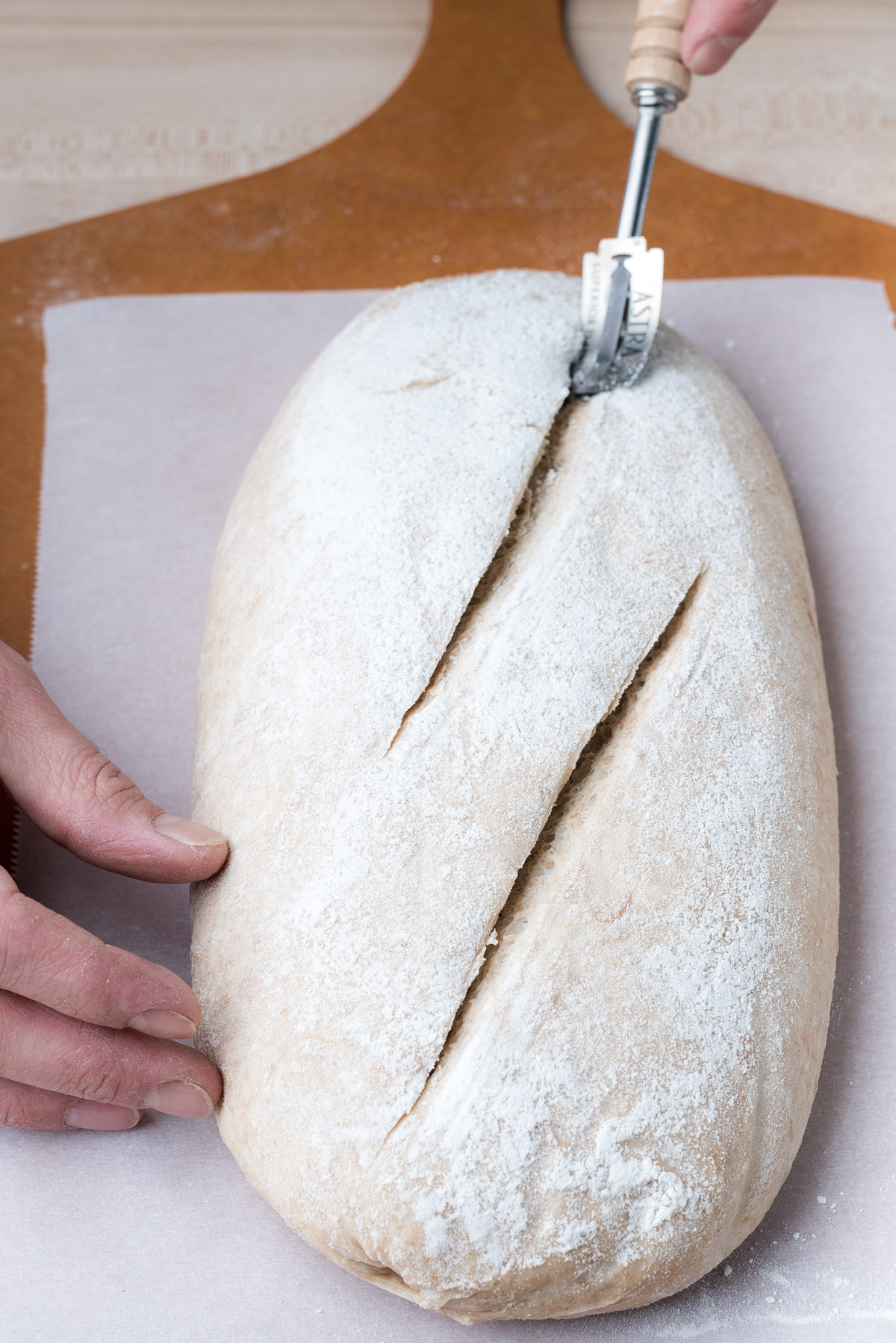
The preferred scoring implement for this score is a curved blade. The curve helps create a lip at each cut that peels back when the dough is baked. Start at the side farthest from you and make an angled cut to about the middle of the batard. The beginning of the second cut should overlap the end of the first. Additionally, the closer the two cuts are to each other the smaller the separation when they expand.
This design can also be useful for dough you know won’t spring up high when baked — perhaps it’s a whole wheat recipe or there’s a large percentage of mix-ins. The double score usually opens nicely even with these types of breads.
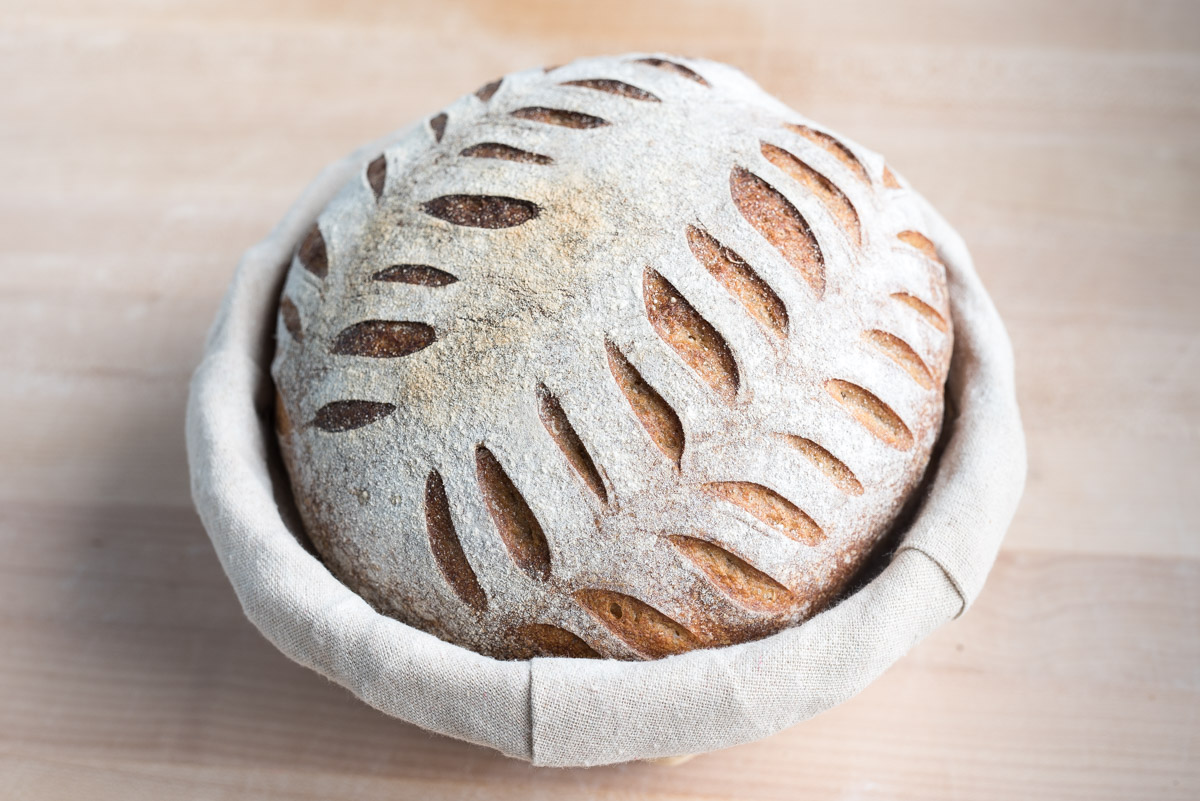
These designs are only a starting point for you to develop your own unique and creative mark with decorative cuts. Let the lame be your paintbrush — be creative and have fun!
Do you have a favorite scoring pattern? Let us know in the comments below!